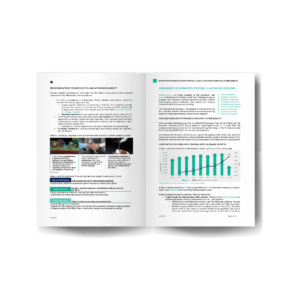Description
Top-10 Chinese Carmakers in ADAS & Autonomous Driving
This report analyzes the ADAS fitment in 313 models from the Top-10 Chinese Carmakers to provide roadmaps in ADAS Level 2-4, their sensor technology for autonomous driving and their shares in the deployment of ADAS in China.
- BAIC (Beijing Auto, Arcfox, Beijing Benz, Fujian Benz, Beijing Hyundai);
- BYD,
- Changan (Changan Chongqing, Changan Ford, Changan Mazda);
- Chery (Chery, Jetour, the Cowin, Exeed and JVs with Jaguar Land Rover);
- Dongfeng Motors (Dongfeng Passenger Vehicle Company, Dongfeng Liuzhou Motor Company, Dongfeng Venucia, Voyah and the joint ventures Dongfeng Nissan, Dongfeng Infiniti, Dongfeng Honda and Dongfeng PSA);
- FAW (Bestune, Hongqi, Jiefang Trucks, and JVs: FAW-Volkswagen, FAW Toyota, FAW Mazda);
- GAC (GAC and Aion brands);
- Geely (Geely, Geometry and Lynk & Co);
- Great Wall Motors (Haval, WEY, Great Wall Pick-up, ORA)
- SAIC (Roewe, MG, R-series, Maxus, Yuejin, Wuling, Wagon, Yongyan, Sunwin)
Read
- How leading Chinese carmakers, Tier-1s and new-entrants, including tech giants Baidu, Huawei etc., plan to overcome the challenges and commercialize autonomous driving
- About the availability of key ADAS features, such as Level 0 TSR, Level 1 AEB, ACC, and LKA, and Level 2 Traffic Jam Assist, Park Assist and Level 3 in China’s leading domestic carmakers?
Partially-automated model offerings expand to the premium smart-EV segment
An increasing number of Chinese carmakers collaborates with domestic tech giants in order to develop intelligent pure-electric platforms; BAIC with its premium smart-EV brand Arcfox, Dongfeng with Voyah, GWM with ORA and SAIC with IM; among others. The models offered under the newly established premium EV brands, aim to combine high electric range, robust infotainment in-vehicle systems and autonomous driving capabilities beyond Lv.2.
Driven by its ambition to transform from a production-based to an innovative economy, China has flourishing expectations about its NEVs sector and a vast amount of private-venture capital to invest.
At the same time, China realizes that it will not catch up with Western manufacturers in terms of the technology required for higher levels of autonomy.
For example, its lack in the infrastructure-related with vital aspects of mapping or embedded software development.
This forces China to adopt a mixed model of AD development that combines conditional autonomous driving technologies (i.e. Lv.2.5) and robust in-vehicle connected infotainment products; with higher levels of autonomy (i.e. Lv.4) concentrating only in smart-mobility segments; i.e. robotaxis, ride-hailing services, public transportation sector etc.
“According to the IoV Industrial Development Action Plan issued by the public authorities in late 2018, L2 driving assistant systems and in-vehicle connected information service terminals should be installed into more than 30% and 60% of new cars respectively, by 2020. In recent years Chinese automakers have accelerated the development of in-vehicle connectivity and L2 autonomous driving systems”
The role of collaborations between Chinese Carmakers and domestic tech giants for the development of embedded in-vehicle smart connected systems and the ADAS software
Chinese tech giants, like Baidu, Huawei, Alibaba and Tencent aim to leverage their experience in software and hardware integration in order to gain a “built-in” competitive advantage in applying smart technologies in newly launched ICV models. Besides valuable gains from the vast amounts of generated data, ICVs deployment could be tech giant’s first step in order to leverage their smart-tech knowledge in the next generation of autonomous vehicles.
Indeed, there is already strong collaboration between Chinese carmakers and tech companies.
- Alibaba’s high-precision maps embedded in AutoX and XPeng smart-driving pilots,
- Baidu’s Xiaodu in-car OS embedded in Chery’s premium SUV brand Exeed,
- GAC’s ADiGO driving assistant package enhanced with Baidu’s cloud computing and intelligent digital marketing solutions,
- Huawei Lidar technology integrated into newly BAIC’s Arcfox S,
- Huawei’s new-generation Balong 5000 5G chipset that enables GAC’s new energy vehicles 5G and V2X communication modules;
- Tencent SoC that has been successfully integrated into several Geely models;
China accelerates efforts to establish a cross-cutting, ecosystem-centric, regulation framework for ICV’ deployment
China promotes an ecosystem-centric coordination approach among all regulatory departments, particularly across different spheres of responsibilities, regions and levels of administration; to forestall the legal and liability issues related to ICVs usage and gradually enable their mass deployment.
In Feb.2020, China’s National Development and Reform Commission, the Ministry of Industry and Information Technology and nine other ministries jointly issued the Innovative Development Strategy of Intelligent Vehicles, an ecosystem-centric regulatory approach that aims to establish a sustainable and comprehensive framework for AV development over the next three decades. The policy document proposes that by 2025:
- the regulation standards underpinning smart vehicle technology innovation, cybersecurity and AV industry ecosystem will be formed;
- the capacity of the country’s digital infrastructure, regarding the wireless networks for the full deployment of LTE-V2X and 5G-V2X technologies, will be enhanced;
- and the large-scale production of vehicles capable of conditional autonomous driving (i.e. L3) as well as the commercialization of highly autonomous vehicles (i.e. L.4) in certain circumstances, will be realized.
Earlier this year China’s public authorities have issued the Standards for Road Testing and Demonstration Application of Intelligent Connected Vehicles; a draft regulatory framework that would allow for “road testing and example application of smart connected vehicles”, with China’s public highways permitted as a test-site. The draft also aims to support cargo and passenger transportation via autonomous driving vehicles and promote car-sharing and smart-parking business models on a national scale.
TABLE OF CONTENTS
Executive Summary
- Chinese carmakers lead Lv.3-Parking & catch up with European, Japanese & US rivals
- What this report delivers
- Methodology: 10 leading Auto Groups & 313 models examined
- State of the Art: SAE Lv. 0-3 in China in 2021 by Top-10 Chinese OEMs
1.1. Roadmaps of Chinese Carmakers to Lv.4 Autonomous Driving by 2025
1.2. SAE Level 3-Driving in China: New car launches, features and penetration
1.2.1. Combined Lv.0-3 Models & Sales in 2020 by Top-10 Chinese Carmakers
1.2.2. Lv.3-Driving & Parking availability in Top-10 Chinese OEMs’ models
1.3. SAE Level 2-D status in China: Penetration & Technology offerings
1.3.1. Level 2-Driving feature description, model fitment and sales in 2020
1.3.2. Level 2-Driving Car sales in China in 2020 by Chinese Carmaker
1.3.3. Ranking by Lv.2 Sales in Driving & Parking by Chinese Carmakers
1.3.4. Lv.2-D & Lv.2-P availability in China in 2021 by Top-10 Chinese OEMs
1.3.5. SAE Lv.2 penetration (%) in Top 10 Chinese Carmakers’ brands
1.4. Top-10 Chinese Carmakers Lv. (0 to 3) Breakdown by Model and Sales
1.5. ADAS Lv.0-Lv.3 Availability in BAIC, BYD, in China in 2021
- Top-10 Chinese Carmakers in Autonomous Driving
2.1. BAIC Motors
2.1.1. BAIC’s position in China’s Passenger Car market
2.1.2. The availability of ADAS Level 0-2 in BAIC’s model Line-up in 2021
2.1.3. BAIC’s Strategy and Roadmap to Level-4 Autonomous Driving
2.1.4. BAIC’s Top Investments in Autonomous Driving Technology
2.2. BYD
2.2.1. BYD’s Car sales in 2020
2.2.2. Vision & Strategy in ADAS & Autonomous Driving
2.2.3. Key partnerships and Investments
2.2.4. The availability of Level 0-3 in BYD’s model Line-up in 2021 in China
2.3. CHANGAN
2.3.1. Changan’s Car sales in 2020 including JVs
2.3.2. Changan’s Vision & Roadmaps to Level 4-Autonomous Driving
2.3.3. ADAS Portfolio & Technology Capabilities
2.3.4. Strategy execution incl. key partnerships
2.4. Chery
2.4.1. Chery’s position in the Chinese market
2.4.2. Chery’s Strategy in ADAS & Autonomous Driving
2.4.3. ADAS Portfolio, Feature Penetration & Technology Capabilities
2.5. Dongfeng Motors
2.5.1. Dongfeng’s position in the Chinese market
2.5.2. ADAS Portfolio, Feature Penetration & Technology Capabilities
2.6. FAW
2.6.1. FAW’s ADAS Portfolio, Feature Penetration & Technology Capabilities
2.6.2. FAW Strategy’s to reach Lv.4 Autonomous Driving
2.7. GUANGZHOU AUTOMOBILE GROUP (GAC)
2.7.1. GAC’s Strategy in ADAS & Autonomous Driving
2.7.2. ADAS Portfolio and Feature Penetration in GAC’s line-up
2.8. Geely
2.8.1. Geely’s Position in the Automotive Market in 2020
2.8.2. Geely’s Vision & Roadmaps to Level 4-Autonomous Driving
2.8.3. Strategy execution incl. key partnerships
2.8.4. The availability of Level 0-2 in Geely’s model Line-up in 2021 in China
2.8.5. Geely’s market leadership in Lv.2 car sales volume in China
2.9. Great Wall Motors (GWM)
2.9.1. GWM Group Structure, Brands and positioning
2.9.2. GWM’s Strategy in ADAS & Autonomous Driving
2.9.3. The availability of Level 0-2 in GWM’s model Line-up in 2021
2.10. SAIC
2.10.1. SAIC’s Strategy in ADAS & Autonomous Driving
2.10.2. The availability of Level 0-2 in SAIC’s model Line-up in 2021
- The evolution of Autonomous Driving in China
3.1. China Automated Driving Forecast: L2-D to L4-D 2025
3.2. China’s regulation & Policy for Intelligent & Connected Vehicles (ICVs)
3.2.1. China’s AD regulatory framework is still under development
3.2.2. Concerns over the regulatory action needed in China.
3.3. Investment boom.






